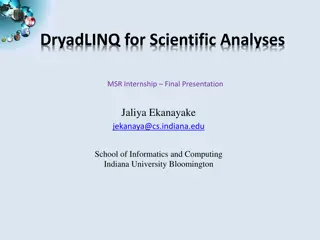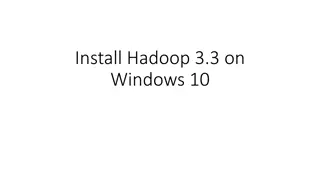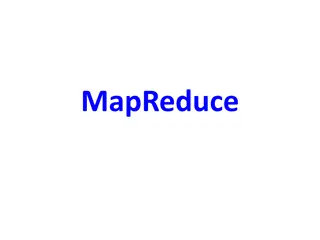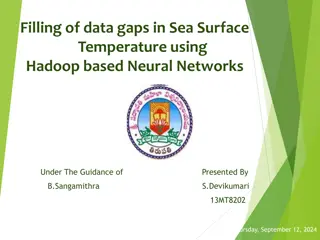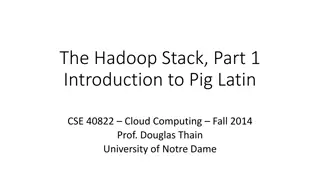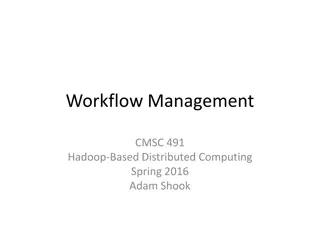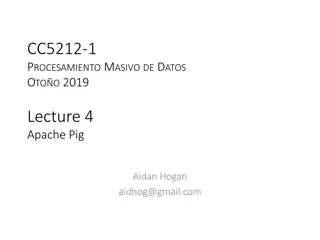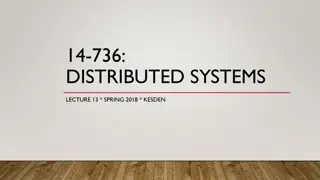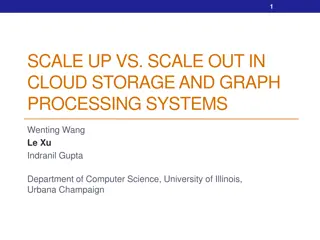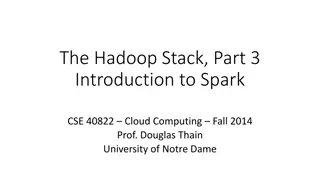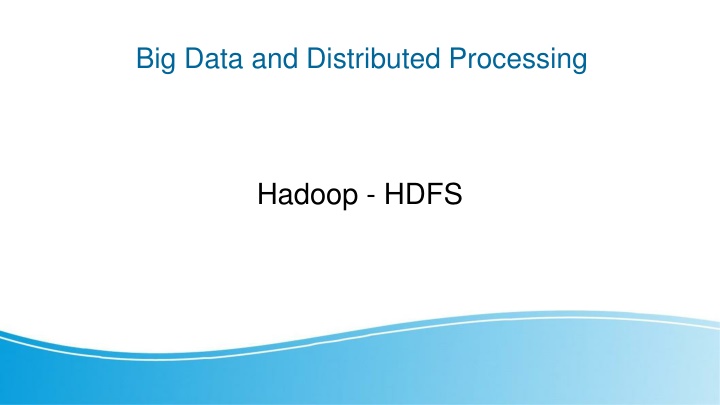
Big Data Processing with Hadoop and HDFS
Explore the world of big data and distributed processing with the help of Hadoop and HDFS. Learn about the characteristics of big data, how Hadoop is used for collecting and processing data, and the ecosystem around Hadoop including YARN. Dive into HDFS, the distributed approach for storing massive volumes of information.
Download Presentation

Please find below an Image/Link to download the presentation.
The content on the website is provided AS IS for your information and personal use only. It may not be sold, licensed, or shared on other websites without obtaining consent from the author. If you encounter any issues during the download, it is possible that the publisher has removed the file from their server.
You are allowed to download the files provided on this website for personal or commercial use, subject to the condition that they are used lawfully. All files are the property of their respective owners.
The content on the website is provided AS IS for your information and personal use only. It may not be sold, licensed, or shared on other websites without obtaining consent from the author.
E N D
Presentation Transcript
Big Data and Distributed Processing Hadoop - HDFS
Big Data Problem With popularization of internet come need to storage large amount of variety of data. Big data primarily refers to data sets that are too large or complex to be dealt with by traditional data-processing application software.
Big Data Characteristics Volume (quantity) Variety (The type and nature of the data.) Velocity (The speed at which the data is generated and processed)
Hadoop The Apache Hadoop software library is a framework that allows for the distributed processing of large data sets across clusters of computers using simple programming models. It is designed to scale up from single servers to thousands of machines, each offering local computation and storage. Hadoop can have different system to perform different tasks.
What Hadoop is used for ? Collecting, processing and storing data. Hadoop was applied across The University of Tasmania, an Australian university, to track the activities of 26000 people and manage their progress. Similarly, it was used to measure a teacher's effectiveness with student's experience for learning, marks obtained, behavior, demographics, and other variables. Big Data can track user buying behavior and compare them with sale techniques to add more value to the business. Similarly, it can be used for a customer loyalty card, local events and inventory management.
Hadoop Yarn Yet Another Resource Negotiator It handles the cluster of nodes and acts as Hadoop s resource management unit. YARN allocates RAM, memory, and other resources to different applications. YARN has two components : -ResourceManager (Master) - This is the master daemon. It manages the assignment of resources such as CPU, memory, and network bandwidth. -NodeManager (Slave) - This is the slave daemon, and it
Hadoop -HDFS Distributed approach to store the massive volume of information. HDFS is a specially designed file system for storing huge datasets in commodity hardware, storing information in different formats on various machines. There are key two components in HDFS: -NameNode is the master daemon. There is only one active NameNode. It manages the DataNodes and stores all the metadata. - DataNode is the slave daemon. There can be multiple DataNodes. It stores the actual data.
HDFS- Distributed Storage HDFS stores data in a distributed manner. It divides the data into small pieces and stores it on different DataNodes in the cluster. In this manner, the Hadoop Distributed File System provides a way to MapReduce to process a subset of large data sets broken into blocks, parallelly on several nodes.
HDFS - Blocks HDFS splits huge files into small chunks known as blocks. Block is the smallest unit of data in a filesystem. We (client and admin) do not have any control on the block like block location. NameNode decides all such things. HDFS default block size is 128 MB. We can increase or decrease the block size as per our need. If the data size is less than the block size of HDFS, then block size will be equal to the data size.
HDFS - Replication Hadoop HDFS creates duplicate copies of each block. This is known as replication. All blocks are replicated and stored on different DataNodes across the cluster. It tries to put at least 1 replica in a different rack. DataNodes are arranged in racks. All the nodes in a rack are connected by a single switch.
Hadoop HDFS Operations HDFS Read Operation
Hadoop HDFS Operations HDFS Write Operation
Docker Docker is a set of products that use OS-level virtualization to deliver software in packages called containers. Imagine that Containers are packages with virtual machine that already have installed selected software Containers are isolated from one another and bundle their own software, libraries and configuration files but they can communicate with each other through well-defined channels. Docker containers are lightweight, a single server or virtual machine can run several containers simultaneously.
How To use Docker - Images To use Docker first you need to have container image. Most of popular software have their images stored on: https://hub.docker.com You can pull container from repository using: docker pull There is an option to create your own image using: docker build
How to use Docker Start container You can start container using: docker run Docker run will also download container from have if you don t have image Test it, use: docker run hello-world
How to use Docker Management docker ps You can check on all running containers. docker images You can check all downloaded containers. docker stop Will stop running container docker start Will start running container. docker rm Will remove container. docker exec Can execute command in container.
Task 1 1. Search for nginx container on https://hub.docker.com/ . 2. Run the container and expose it s port so you can access it from localhost ( -p ) . 3. Check if container works with docker ps . 4. Check localhost on exposed port Result should be similar to given picture: 5. Optional: try to serve your 6. own html file. 7. Stop and remove container.
Run Hadoop environment docker run --name <container-name> -p 9864:9864 -p 9870:9870 -p 8088:8088 --hostname <your-hostname> -it hadoop --name give container it s name -it make name alias -p open ports --hostname provide a hostname
Access to Hadoop docker exec -it nodename /bin/bash will enter hadoop console http://localhost:9870
Managing files in HDFS hdfs dfs -mkdir /user Creats directory with name user hdfs dfs -ls /dir show what is in dir hdfs dfs -touche file1 creates file1
Task 2 1. Download any image or file (example https://hadoop.apache.org/hadoop-logo.jpg) 2. Create new directory on HDFS 3. Upload downloaded file into created directory from hadoop console (remember that container and machine file system are separate) 4. Change name if file and upload it into created directory using browser (http://localhost:9870)
Hadoop Single node You can safely exit provided container using: stop-dfs.sh stop-yarn.sh exit Restart it with: docker start -i <container-name>
Bibliography https://hadoop.apache.org/hadoop-logo.jpg https://s3.amazonaws.com/static2.simplilearn.com/ice9/free_res ources_article_thumb/hadoop_1.JPG https://upload.wikimedia.org/wikipedia/en/f/f4/Docker_logo.svg https://en.wikipedia.org/wiki/File:Big_Data.png https://data-flair.training/blogs/wp- content/uploads/sites/2/2016/05/Data-Read-Mechanism-in- HDFS.gif https://data-flair.training/blogs/wp- content/uploads/sites/2/2016/05/Data-Write-Mechanism-in-

